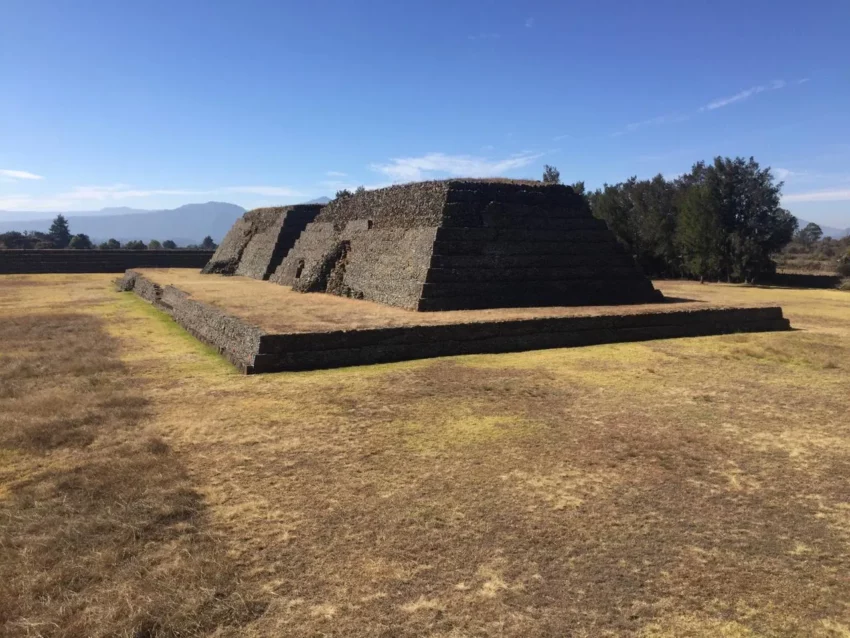Ihuatzio: A Prehispanic Astronomical Observatory and Ceremonial Center
Ihuatzio, an archaeological site located in the state of Michoacán, Mexico, stands as a testament to the rich prehispanic history of the region. Situated on the southern slopes of Cerro Tariaqueri, just north of the town of Ihuatzio in the Tzintzuntzan municipality, this site offers invaluable insights into the ancient civilizations that once thrived in the area.
Get your dose of History via Email
Historical Context
The territory of Michoacán has been inhabited for at least 10,000 years, with evidence of human habitation dating back to various prehispanic periods. The region saw the arrival of multiple migration waves, including the Pirinda, Nahua, Huetamo, Colima, Purépecha, and other peoples, each contributing to the diverse cultural tapestry of Michoacán. Among these, the Purépecha civilization emerged as a dominant force, centered around the Lake Pátzcuaro area.
Before the 13th century, both Nahua and Purépecha peoples coexisted in the region, relying on agriculture and fishing for sustenance. The Purépecha, descendants of Chichimecas from the north, encountered cultures similar to their own but more advanced in technical and social aspects. This encounter led to the formation of the Purépecha state in the 13th century, which eventually expanded its territory and influence, rivaling that of the Aztec Empire.
The Archaeological Site of Ihuatzio
Ihuatzio itself is an archaeological marvel, built on an artificially leveled plateau. The site served as an astronomical observatory and ceremonial center, highlighting its importance in the prehispanic history of Michoacán. Despite its relatively small size, the pyramids dedicated to “Curicaueri” and “Xaratanga” are particularly noteworthy. Additionally, a sculpture representing a chac-mool, characteristic of the Toltec culture, was discovered at the site, along with a series of roads and walls that once surrounded it.
The site’s strategic location, at the extreme west of Lake Pátzcuaro and in proximity to other dominant sites such as Tzintzuntzan, underscores its significance in the region’s prehispanic settlement patterns. Ihuatzio was one of the key centers of the Purépecha or Tarascan Empire, reflecting the empire’s military, political, and religious developments.
Occupation Phases
Archaeological evidence indicates that Ihuatzio was occupied during two distinct periods. The first occupation, between 900 and 1200 CE, corresponds to Nahuatl-speaking groups. The second occupation, from 1200 to 1530 CE, marks the period of maximum development reached by the Purépecha Culture. This era corresponds to the Tarascan domain of the Lake Pátzcuaro basin and almost all the northern part of the State of Michoacán.
Architectural Features
Ihuatzio is distinguished by its defensive walls, walled roads, and the Plaza de Armas, a large rectangular area used for ceremonial activities, rituals, and possibly economic exchanges. The site also features yácatas, unique Purépecha architectural elements, and the Huatziris or walled causeway, which served both as a roadway and a defensive structure.
One of the most intriguing aspects of Ihuatzio is the “Calzada del Rey” (King Road), a unique prehispanic architectural feature in Michoacán and Western Mexico. This construction suggests that it was used as a walkway for the “Cazonzi” (Purépecha or Tarascan king) to travel from the ceremonial center to different points of the site.
Conclusion
Ihuatzio offers a fascinating glimpse into the prehispanic civilizations of Michoacán, particularly the Purépecha or Tarascan Empire. Its architectural and ceremonial features, along with its strategic location, underscore the site’s importance in the region’s ancient history. As archaeological investigations continue, Ihuatzio will undoubtedly reveal more about the complex societies that once flourished in this part of Mexico.

